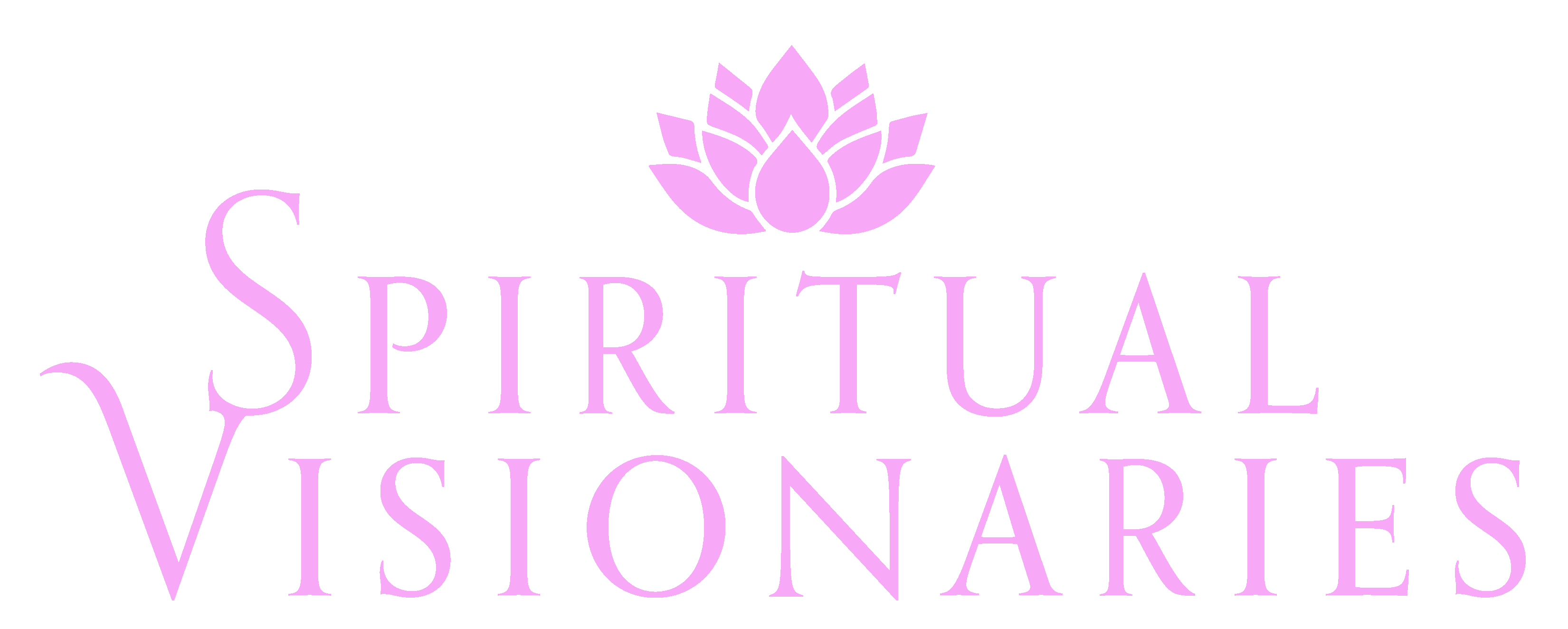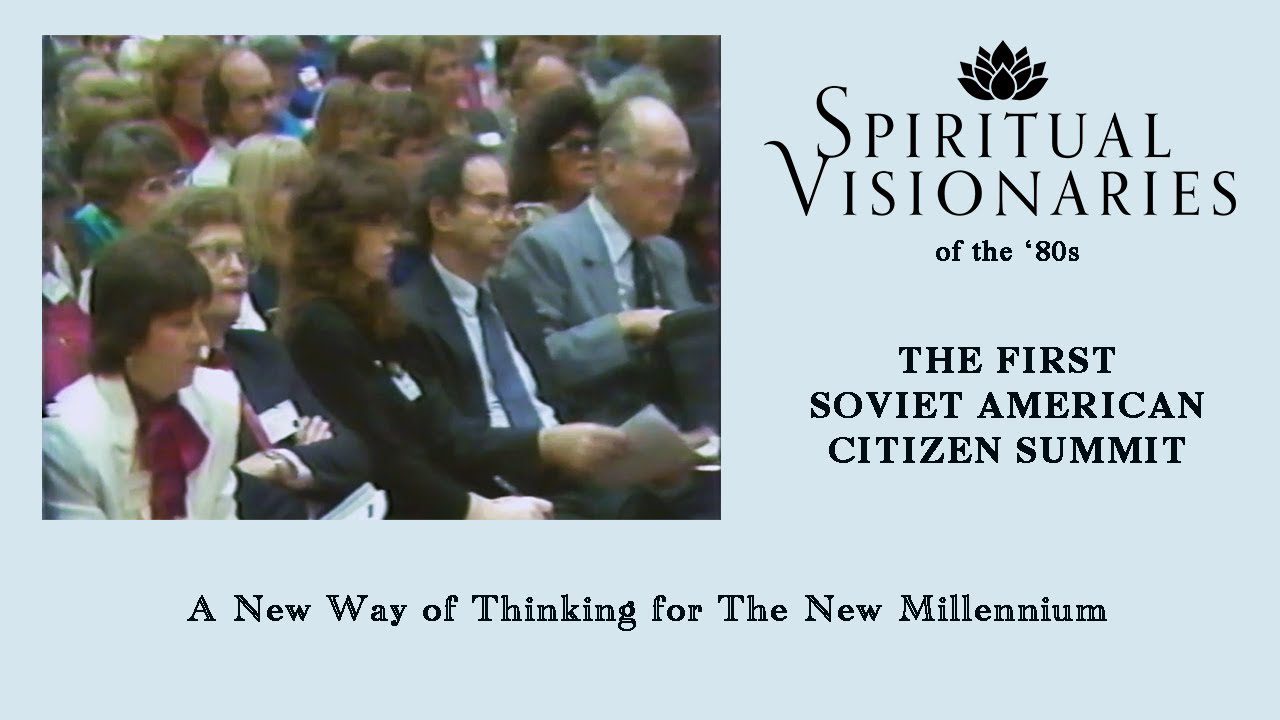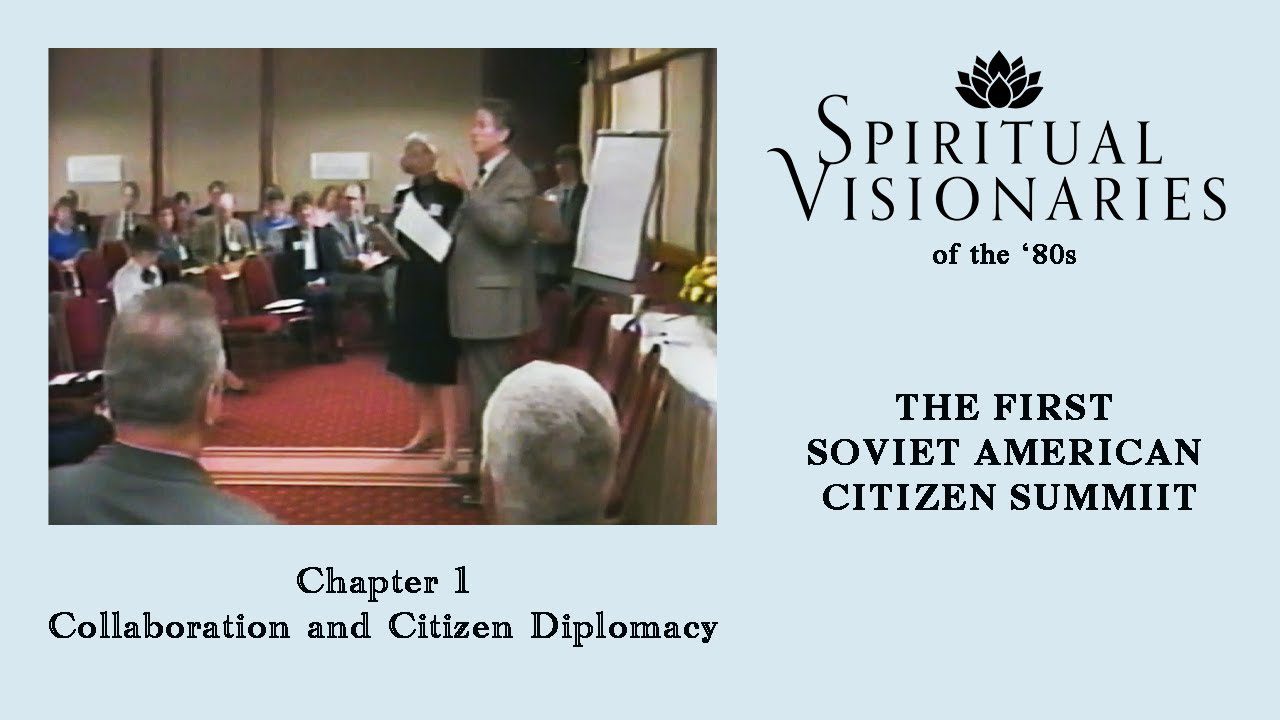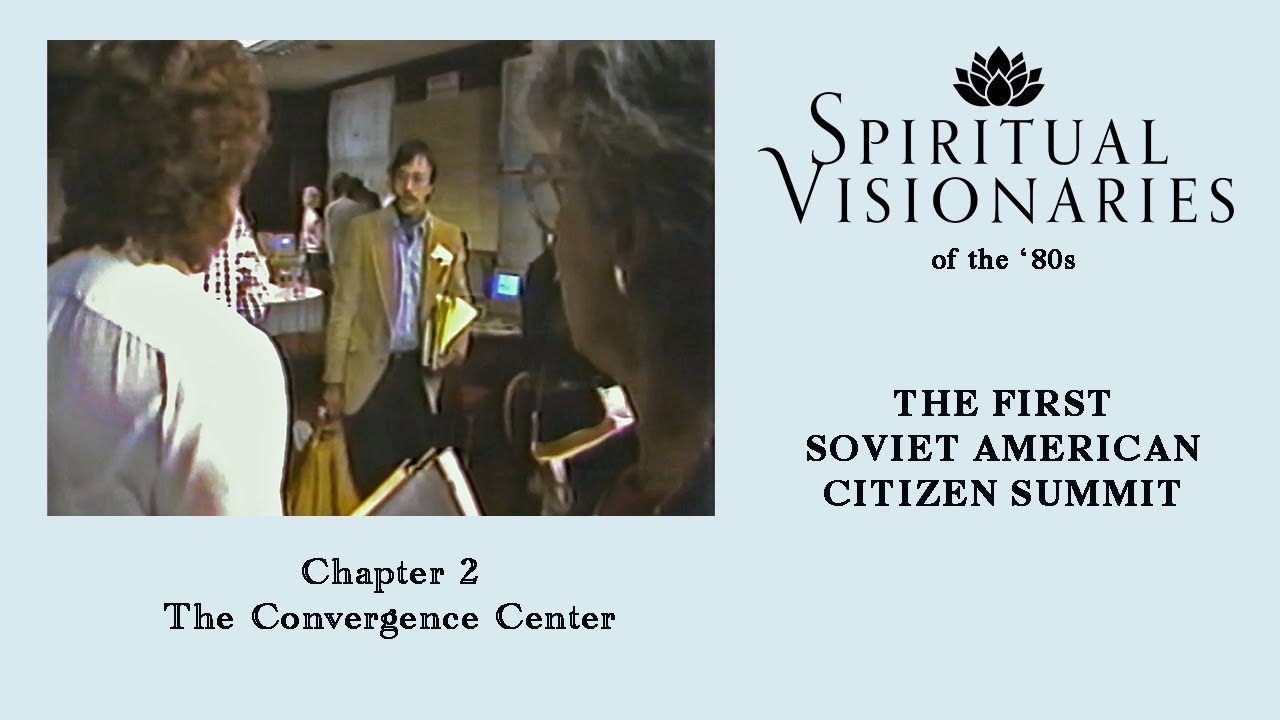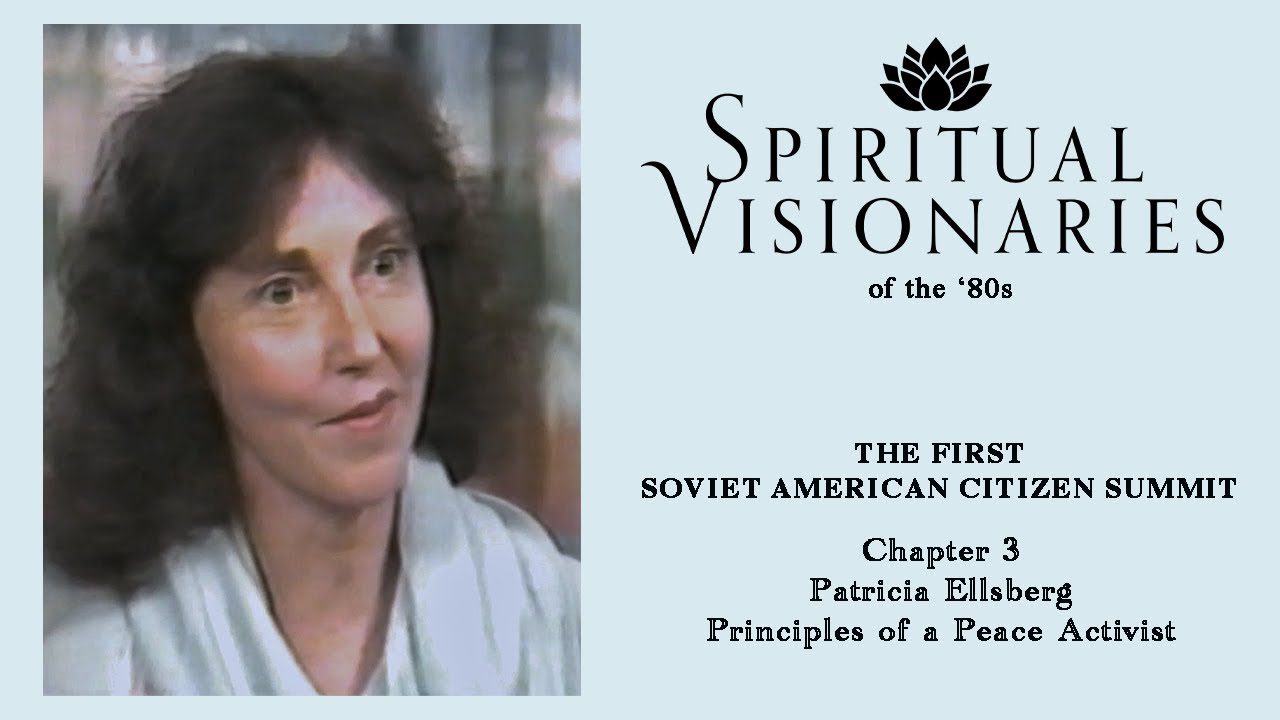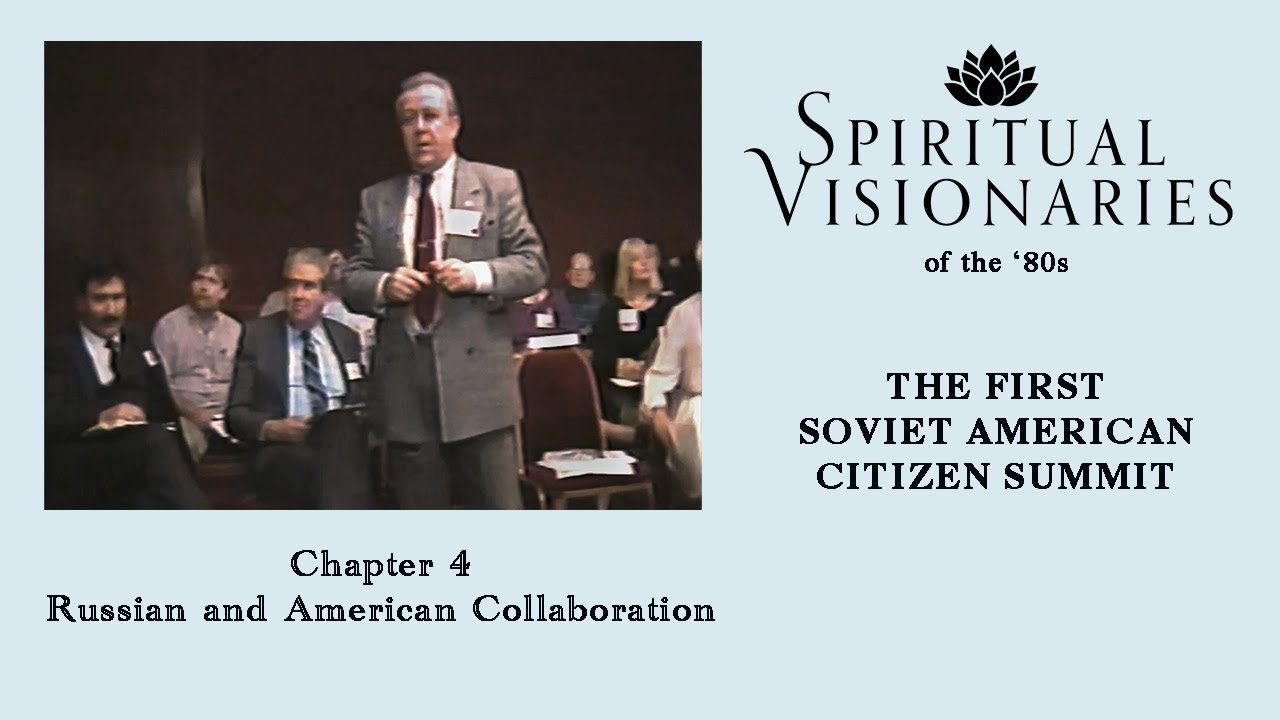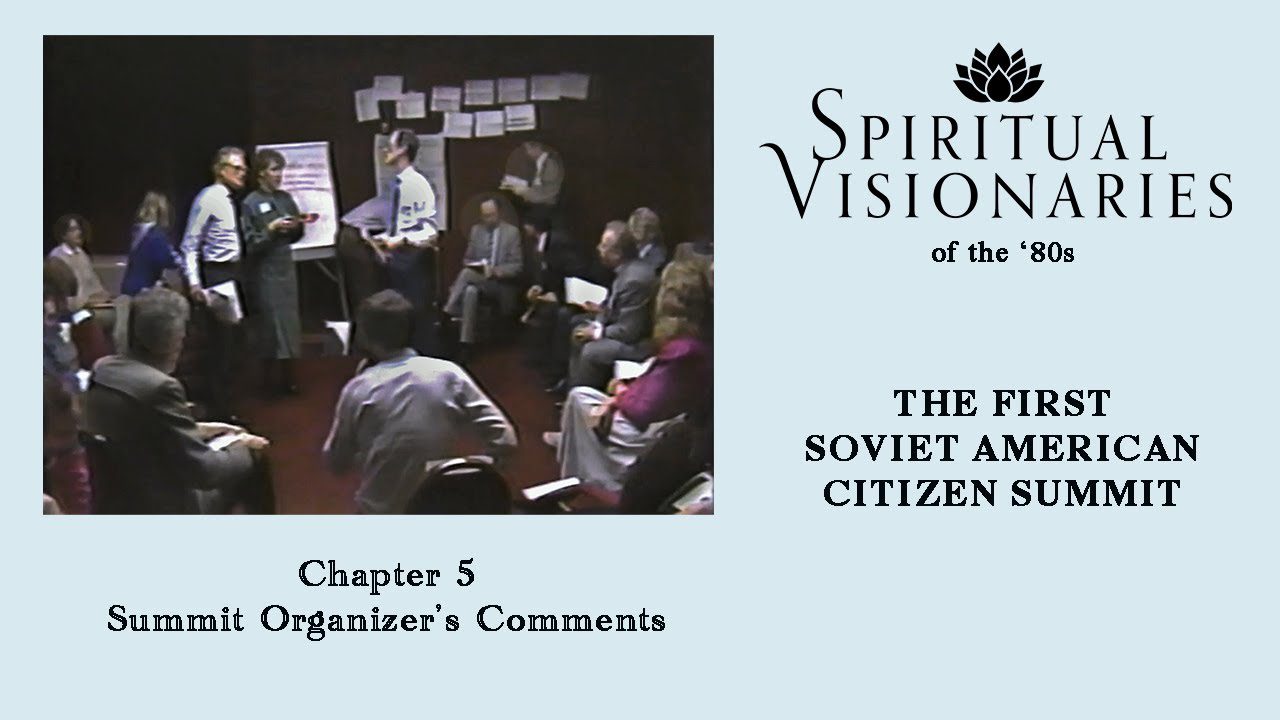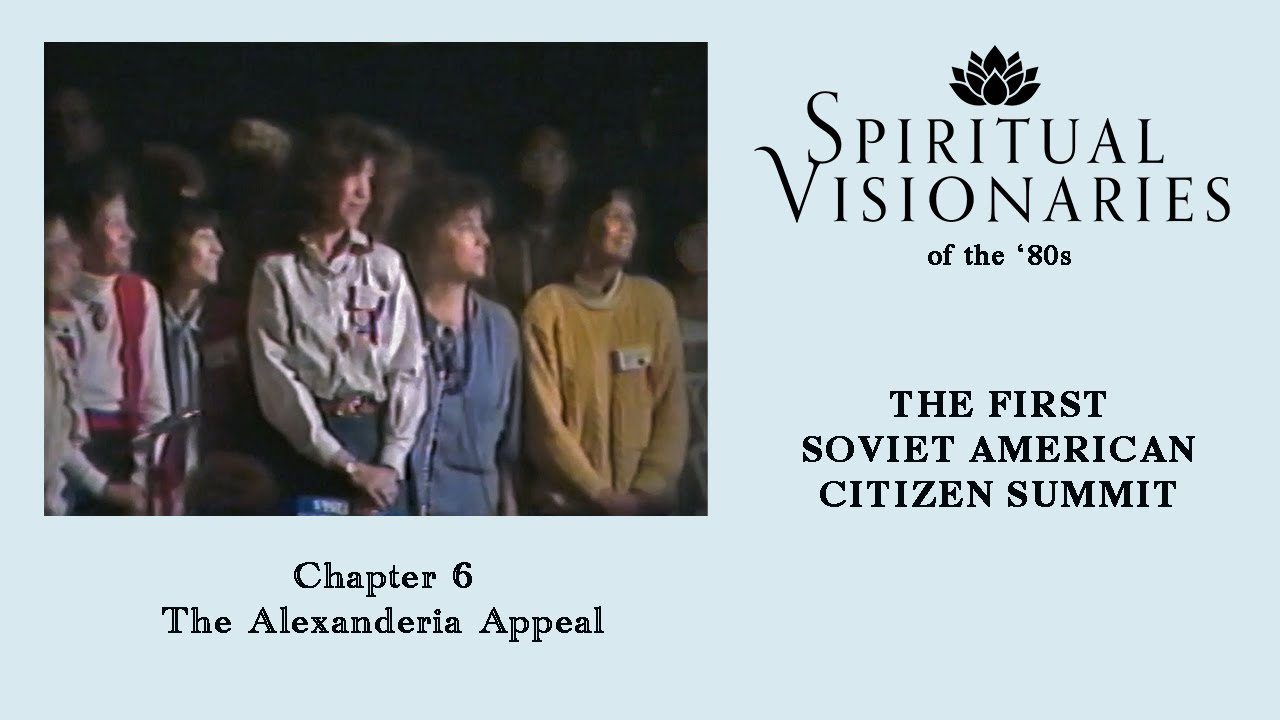THE FIRST SOVIET AMERICAN CITIZEN SUMMIT
WASHINGTON, D.C. 1988
The full length video has been segmented into chapters.
A New Way of Thinking for the New Millenium
In 1988 the Center for Soviet American Dialogue sponsored a weeklong Summit in Washington D.C… 300 American innovators and over 100 of their Soviet counterparts came together to create joint projects in the areas of health, education, economics, national security, environment, media and peace. The resulting projects were published in a daily newspaper and fed into a Convergence Center situation room where they were mapped to promote the integration and cross-fertilization of projects. The Summit organizers were Rama Vernon, Henri Borovik, Barbara Marx Hubbard and Paul Temple. Several American notables such as Ted Turner and Robert Muller, former Assistant Secretary General of the United Nations, spoke from the podium. Henri Borovik read a letter from Mikhail Gorbachev expressing greetings and wishes for success, recognizing the Summit as a significant contribution to Soviet- American relations.
The Summit concluded with the reading of an open letter addressed to Secretary General Mikhail Gorbachev, President Ronald Reagan and the next President of the United States. The letter, included here, was entitled “The Alexandria Appeal.” The video documents the Convergence Center process, the eagerness to collaborate and the creativity and mindset of these innovators and visionaries.
TRANSCRIPT
Video Duration: 52:20
Chapter 1: Collaboration and Citizen Diplomacy
Futurist Barbara Marx Hubbard introduces a collaborative process that transcends national and political boundaries. She emphasizes the potential for people from both nations to work together on transformative projects, urging the participants to speak from both their hearts and personal passions. She reflects on the historical significance of the U.S. and the Soviet Union as superpowers with radical visions for world transformation, rooted in the ideals of equality and social responsibility. The summit is a step towards converging these visions and creating a unified global future. Peace activist Rama Vernon echoes this sentiment and welcomes the participants, emphasizing the unprecedented nature of the event. She defines a “citizen diplomat” as “a world citizen who transcends personal, ideological, and political boundaries to embrace the oneness of humanity… someone who can hold and respect multiple perspectives without judgment, allowing his or her heart to guide actions towards unity and understanding.”
TRANSCRIPT
Video Duration: 5:20
Chapter 2: The Convergence Center
The Convergence Center, conceived by futurist Barbara Marx Hubbard, is both an environment and a process. Modeled after situation rooms, specialists organize and synthesize information coming from various task forces. At the hub, projects are mapped and tracked on a large physical display, entered in databases and published in “The Summit Daily” newspaper so all participants have access to everything that’s going on. The Convergence Center also provided video cameras which could be called for by a task force on a moment’s notice. Citizen diplomacy efforts between the Soviets and Americans are a focus, with a significant number of joint projects being created and entered into the system. Overall, the Convergence Center process encourages cross-cultural dialogue, creativity and collaboration, with the long-term goal of inspiring transformative change that’s mutually beneficial.
TRANSCRIPT
Video Duration: 5:07
Chapter 3: Patricia Ellsberg, Principles of a Peace Activist
Patricia Ellsberg explains that her guiding principles as a peace activist involve both a strong “no” and a powerful “yes.” The “no” represents her opposition to violence, state terrorism, oppression and the threat of nuclear war, particularly in the context of NATO’s foreign policy. On the other hand, her “yes” reflects her commitment to the idea that humanity is one interconnected family, emphasizing respect for life, equality, cooperation and redirecting resources from war to the betterment of life on Earth.
TRANSCRIPT
Video Duration: 1:17
Chapter 4: Russian and American Collaboration
Scenes from task forces highlight a variety of perspectives on global cooperation, peacebuilding and joint projects between the United States, the Soviet Union and other nations.
Willis Harman emphasizes the importance of citizen movements and the need for a collective mindset shift to secure a sustainable planetary future. A Russian Orthodox Bishop stresses the importance of trust, goodwill and unity to overcome mutual suspicion and build a global family.
Task force reports suggest initiatives including joint military committees for mutual security without nuclear weapons, collaborative efforts to eliminate terrorism, youth exchange and reforestation projects in Costa Rica, US-Soviet-UN initiatives on global education and peace, joint ventures for farmers, parenting education programs and healing arts councils.
TRANSCRIPT
Video Duration: 4:22
Chapter 5: Summit Organizer’s Comments
Futurist Barbara Marx Hubbard observes that this gathering of over 500 Americans and Soviets, transcended the barriers of bureaucracy by engaging as individuals rather than through organizations. This person-to-person interaction eliminated typical bureaucratic obstacles. Henri Borovik, President of the Soviet Peace Committee, emphasizes that ordinary people are ahead of politicians as Gorbachev noted, and he urges politicians to follow the lead of the public in fostering collaboration. And peace activist Rama Vernon stresses that disarmament between nations is only possible once individuals learn to trust each other. Efforts like those by citizen diplomats and the Center for Soviet American Dialogue aim to build that trust through personal familiarity and friendship.
TRANSCRIPT
Video Duration: 1:09
Chapter 6: The Alexandria Appeal
In a final gathering of all participants, Paul Temple, a co-organizer of the Summit, reads an open letter titled “The Alexandria Appeal.” Addressed to Mikhail Gorbachev, Ronald Reagan and the next U.S. President, the document reflects the consensus of the Soviet American Citizen Summit held in Alexandria, Virginia in February 1988 where over 100 Soviet citizens and 400 Americans gathered to foster new thinking in the nuclear age and design “Social Inventions for the Third Millennium.” The letter emphasizes the need for cooperation between the United States and the Soviet Union to end the arms race, eliminate nuclear weapons, restore healthy economies and address environmental crises. It also calls for strict adherence to the Anti-Ballistic Missiles Treaty, drastic reductions in conventional forces, the cessation of arms sales to developing nations and joint U.S.-Soviet space and environmental projects. The letter is met with resounding and sustained applause.
TRANSCRIPT
Video Duration: 5:52
